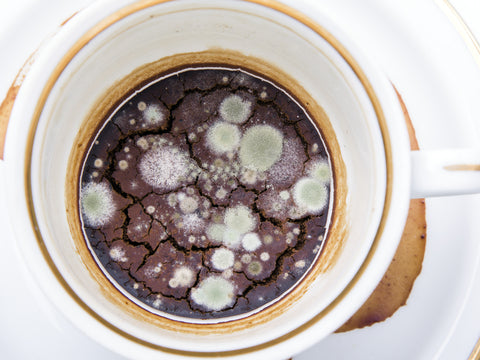Your Coffee Brewer is Moldy!
We recently received a phone call from a customer that a coffee we sent him tasted sour. Since I cupped the roast we sent to him and have brewed and drank that coffee, it didn’t seem right. I asked how he brewed the coffee and he said they used an automatic coffee brewer.
I took a deep breath and wondered what to say. I hate it when I call for service and the customer service rep says the problem is the plumbing. Then when I call the plumber they say it is the appliance. It seems like no one wants to take responsibility for anything.
says the problem is the plumbing. Then when I call the plumber they say it is the appliance. It seems like no one wants to take responsibility for anything.
In this case, I knew what the problem was, but I didn’t want to sound like I was blaming it on something else. However, I went ahead and asked him how long had it been since he ran white vinegar though his brewer. He seemed astonished and said he never had done that. I told him that coffee brewers with reservoirs need to be cleaned at least once a month to remove scale, mold and fungus.
Automatic coffee brewers (e.g. Mr Coffee), pod brewers (e.g. Senso) and capsule brewers (e.g. Keurig) are incredibly convenient and fast. They do not make coffee as well as a siphon, a French Press, or a pour over. However, the convenience early in the morning or in the office break room is worth it.
All automatic coffee brewers share two serious problems. First, the reservoirs and the tubing develop scale, mold and fungus that has to be cleaned out regularly. Second, the thermocouples in the brewers wear out quickly and brew coffee at low temperature. There are automatic coffee brewers on the market that do not use theromcouples e.g. Technivorm Mocamaster, Bunn Phase Brew, Behmor Brazen. However, they are expensive and only popular with true coffee geeks.
If you read the reviews on reservoir coffee makers they are filled with horror stories of coffee drinkers finding black globules floating in just brewed coffee. You can’t blame it on coffee brewer manufacturer. Coffee brewers are wet and warm. After you brew your coffee, the coffee maker sits with warm water in the reservoir and the tubing. It is a perfect place to grow mold and fungus.
“Bacteria forms a slick biofilm when grown in moist, dark places, and so do molds,” says Duberg, pointing to the coffee maker’s water reservoir and piping system as ideal areas for accumulation. “If there is obvious slimy stuff in the coffee maker … this is a good sign there is something growing.” Donna Duberg, M.A., M.S., an assistant professor of clinical laboratory science at Saint Louis University
Consumers often do not notice a change in the taste of their coffee because mold and fungus grow slowly. Also, dark roasted coffees mask the taste of mold and fungus. Often, the first time a consumer notices the taste is when they switch from a dark roast to a lighter roast. Their first thought, of course, is that it must be the coffee.
At least once a month you should fill the brewer’s reservoir with white vinegar and run the brew cycle until it is all out. Don’t forget to open the window, the fumes will clean out your sinuses too. Then fill the reservoir with clean, fresh water and run the brew cycle until it is all cleaned out. If you are still getting black stuff in the clean water, you should repeat the vinegar cycle.
The second problem is the thermocouple. Most automatic coffee makers, when new, brew coffee at 200 F. However, after a while the thermocouple begins to wear out and the brewing temperature drops. The drop is even more pronounced in the Keurig capsule brewers. Keurigs, when new, brew at a maximum of 192 F. By specialty coffee standards that is a little low. But 192 F is the best you can get. You have to check the coffee in your cup. It should be at least at 185 F. If the coffee temperature is down to 170 F or below you will notice that the coffee tastes thin and sour. The only solution is to throw the old brewer out and get a new one. You cannot get them repaired.
E ai kua (let’s eat)
